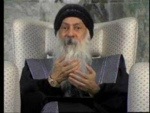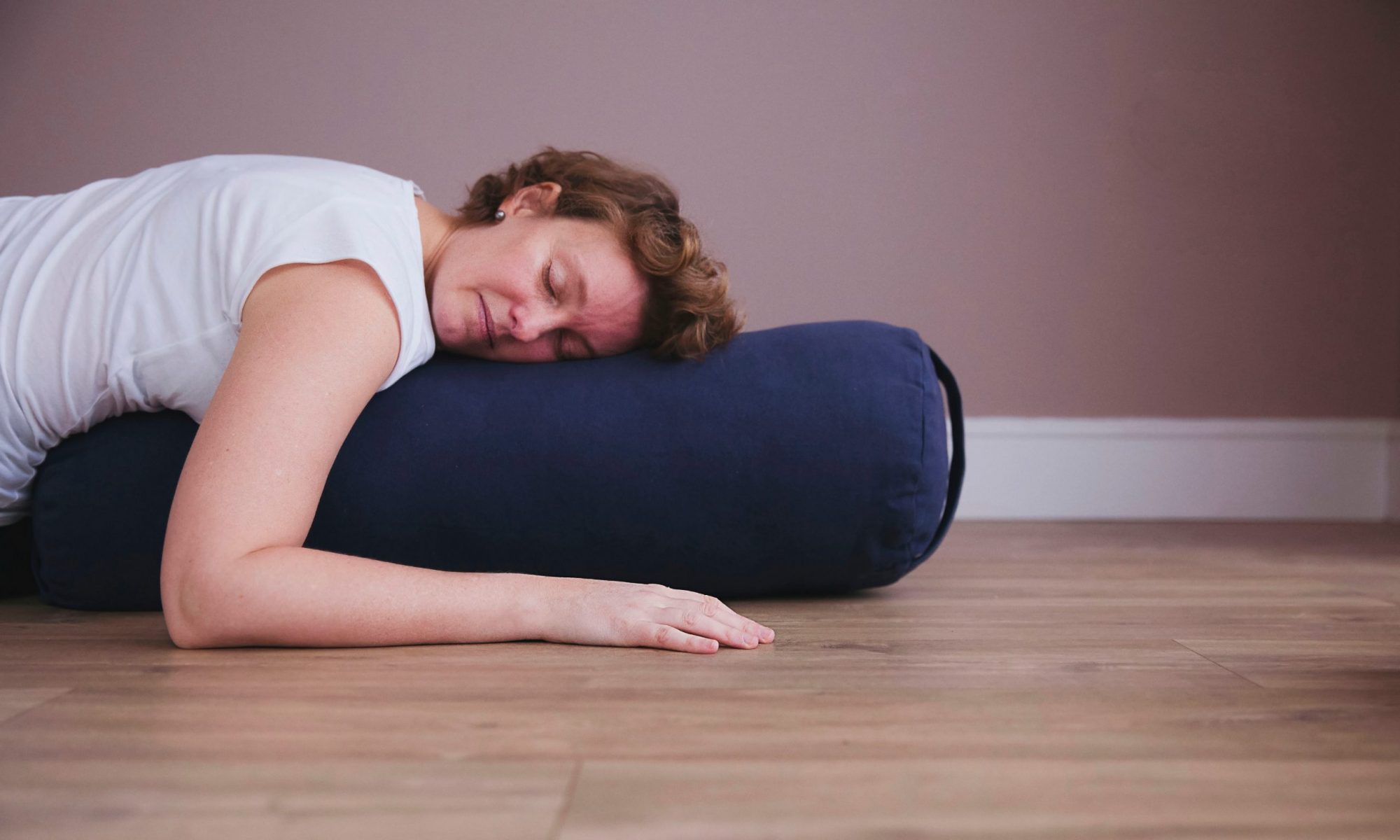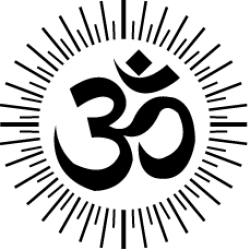“When you’re doing Gibberish, make sure you really are talking gibberish. I was next to someone the other evening and they were making animal noises! I’m naming no names but they really should have known better.”
That’s a taster of the wisdom that was imparted to us 20 or so Osho newbies on our first morning. By this point we’d paid our £12 registration fee which included a compulsory HIV test, bought our maroon and white ankle-length robes and paid a further £12 for a day pass. We’re talking thousands of Rupees here.
“Why Wener?!” I hear you ask. Because I first heard about the Osho International Meditation Resort on a visit to the Sivananda ashram in Kerala four years ago. Some people rave about the place whilst others such as Lucy Edge in her book ‘The Yoga School Dropout’ have been less enthusiastic. One friend of mine – who shall remain nameless – said that she isn’t brave enough to visit the place. I was intrigued and wanted to experience it for myself.
The man behind the myth
The Lonely Planet states that Osho (1931-90) was one of India’s most flamboyant and controversial exports to the West. Having spent years studying philosophy, his ‘methods’ are a way to break down our habits and social conditioning. He enraged many by making outrageous comments about pretty much every world religion. In 1981 he set up an ashram in Oregon, US, but got deported and sought a home for himself and his followers overseas. He found his base in Pune after being denied entry or being deported from 21 countries. He amassed a collection of Rolls Royces and one sits in his former home. You take your shoes off next to it as you enter his house to meditate.
Why ‘sex guru’?
According to Osho, sex is a way to enlightenment. Unsurprisingly, this theory has made him very popular in the West. Apparently in the olden days of the place (1990’s), everyone would be sweaty after the morning meditation, jump in the mixed showers and you’d be having sex with someone before breakfast. Times have changed and the place is very different now. It felt all very organised and sedate. Although I think it’s still there if you want it. I didn’t see much of that going on… or perhaps it was because I was so focused in my meditations. Ha! Fat chance!
Breaking the rules
The Welcome Morning allows you to become familiar with the place, its activities and ensures you don’t make any major faux pas. Within five minutes of arriving, our bubbly Korean host Su Yee had us jumping about and forgetting ourselves. She’s lived there for eight years.
Despite the morning, I still slipped up in the canteen on day two. I put rice straight onto my plate instead of in a bowl. Outrage!! The serving staff were quick to reprimand me and an Indian man was onto me, gesticulating and speaking in Hindi. Svargo, an English guy who’s been visiting since 1988, fortunately came to my rescue (“Yeah, yeah, she gets it. She won’t do it again…”).
As for other rules, if you coughed, sneezed, burped, farted or made any other seemingly involuntary noise during a silent part of a meditation, you had to leave the room. The booklet says: “If the cough or sneeze happens too quickly, then at least leave immediately afterwards. Please don’t wait for someone to have to ask you to leave.” Oooer.
I heard one woman try so hard to stifle a coughing fit that she made twice as much noise as if she’d just coughed. She ran out of the room disgraced. She never returned.
Any noises were amplified by the black marble floor in the main Auditorium. It was so highly polished you could see people’s reflections. It was stunning and so peaceful. In fact, the whole place was beautiful.

(The Auditorium inside and out)

The resort was very Zen with small black pebbles, pools of water, white marble Buddhas sitting amongst carpets of green. Bamboo gracefully creaked in the wind and the buildings were black and shiny. Water fell down walls of slate and people swam in the dark pool (in maroon swimwear). The fact we all wore maroon added to the aesthetics of the place. If we’d been wearing our own clothes, it would have jarred with the surroundings and not been so peaceful.
I spent the first day walking around with my mouth hanging open.
The meditations
Evening Meeting of the White Robe Brotherhood
The highlight of each day was the evening meeting in the Auditorium. People changed out of their maroon robes and into crisp white ones.
The meeting had various stages:
1. Celebrate through dance: I’d say there were about 500 people in the evening meetings and this is the low season. Standing in the Auditorium, the live band would start up. The music slowly gained momentum and became hypnotic. People really went for it. Guys were Sufi whirling, spinning at speed with their arms outstretched. I’ve never seen men dancing so intently. People were all over the place, arms flailing and totally lost in the music. It was really good fun. I danced so hard that I couldn’t see straight. At times the music stopped and everyone had to stick their arms up in the air and shout “Osho!”.
2. Osho speaks: On a projector appeared the man himself. There aren’t pictures of him around the place so this was the first time I saw him. Behold a man with a woolly hat, a beard down to his chest and an outfit that strangely reminded me of Ming the Merciless. We’d been told by Su Yee that we might not understand much of what he says. This was correct. He stretched words out so much and it was all meant to be a method to keep you alert. Examples: “consussneeeeece” “relijeeeen” and “lotussss”.

(If only Ming wore a woolly hat…)

He’s fond of a joke. Some are funny, some aren’t. I liked this one:
A wife says to her husband: “You remind me of the sea.”
Husband: “Is that because I’m so magnificent, strong and wild?”
Wife: “No. It’s because you make me feel sick.”
I think he wove them into his discourses in order to keep you awake. One guy stopped snoring when we all started laughing.
3. Gibberish: In the booklet we were given, Osho says:
“Shouting, laughing, crying, making noise… making gestures. Simply allow whatever comes into your mind without bothering about its rationality, reasonability, meaning, significance. Do it totally with great enthusiasm… make it a reality… just go crazy. Don’t be partial, don’t be middle-class. Just be a first rate crazy man!” “If you don’t know Chinese, say it in Chinese!”
My English sensibilities kicked in and I felt a bit uncomfortable.
4. Sitting silently: I can do that.
5. Fall down ‘like a bag of rice’: Su Yee imparted a handy tip to allow us to fully submit to this stage. We had to move forward on our mat/rug during Gibberish so when the drumbeat came, we could collapse backwards safe in the knowledge that we weren’t going to knock ourselves out on the marble floor. Invaluable.
6. Celebration through dance: Thumping music. Then the music finishes and everyone gets up, walks out, puts shoes on and leaves silently.
Other meditations
Every afternoon is the OSHO Kundalini Meditation. It starts with shaking. “Be loose and let your whole body shake. Become the shaking,” says Osho. On day two, the shaking definitely became me. It’s like you’re doing an impression of someone having an epileptic fit. You then do dancing, sitting and a nice 15 minutes of savasana.
The Dynamic morning meditation had so many stages. The most memorable was standing with your arms held straight up, you jumped up and down with flat feet (killer on the calf muscles on a marble floor) whilst shouting “Hoo! Hoo! Hoo!” We did a test run as part of the Welcome Morning and people had to attempt it standing in front of everyone whilst Su Yee corrected the shape of our mouths when ‘hoo-ing’. It’s a precise art form for sure. She’s had eight years to perfect it.
I liked the OSHO vipassana meditation because it felt familiar. Osho would probably say that it isn’t the best one for me because of this. We sat in silence for 45 minutes observing flow of breath and then 15 minutes of walking meditation. When sitting, I loved how a woman came around and donked you on the head with ‘the vipassana stick’ to keep you alert.
Why?!!
These activities were all designed by Osho to break down our conditioning. We need to remain fully alert. We mustn’t live in our body or mind, but instead, just witness our thoughts. If we feel uncomfortable, it’s probably because it fights against our habits and deep rooted behaviours.
However…
The opulence of the place didn’t sit well with me. Why did Osho need Rolls Royces? Why was it so expensive? Who needs Osho-branded sugar sachets? Surely it’s just a playground for the rich? There was a 50:50 split between Indians and Westerners but if it was more affordable, I would have thought that more people could benefit. It was an oasis totally at odds with the mad India going on outside.
I felt guilty walking past the Indian women sitting on the street trying to sell me pashminas and t-shirts costing a fraction of the daily entrance fee. They saw me walking out of a place where I’d spent a small fortune to jump about like a loon. How could I say that I didn’t need their things?
I guess I felt I could connect with the experience by the end of the second day. I’ve done expressive dance before and the more you do it, the easier it gets. Jumping up and down with flat feet shouting ‘hoo’ is very unfamiliar and therefore scary. But as the old adage goes, you shouldn’t knock something until you’ve tried it. I tried it for two days and it was alright. The people were friendly and, if it was cheaper, I may have stayed longer.
But I won’t miss the hoo-ing. Or the Gibberish.


I am going to be in India during November and would love to visit Oshos Ashram ( I fly to India 20/10/13 ) I am a meditator. non smoking non drinking vegetarian ( but otherwise i am perfectly normal ha ha